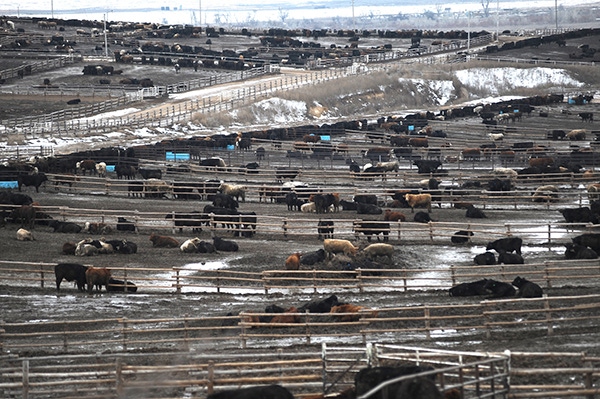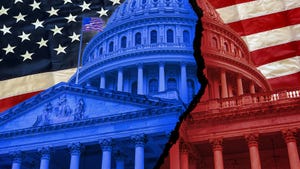Cattle markets wrap up 2016
Cattle prices have somewhat recovered from crash in third quarter.

The transition to bigger beef supplies that began affecting the cattle markets in 2015 continued in 2016. Oklahoma State University extension livestock marketing specialist Derrell Peel said, as a result, markets adjusted downward, including a brutal, fear-driven market crash in the third quarter, followed by a significant rally in the fourth quarter.
Fed cattle prices have recovered 12-15% since mid-October, while feeder cattle are up 10-12%. Calf prices have also increased about 25% since the October lows.

Feedlots have marketed cattle very aggressively since February, resulting in higher-than-expected slaughter rates. Photo credit: Kansas State University
According to Peel, feedlots have marketed cattle very aggressively since February, resulting in higher-than-expected slaughter rates. Steer slaughter has not pulled back so far in the fourth quarter, as expected, and is instead up 7.2% for the year to date compared to last year. Steers on feed in feedlots as of Oct. 1 were down 1.4% from one year ago, indicating that feedlots have pulled ahead cattle, especially steers, thereby tightening future supplies.
An increase in heifer slaughter, on the other hand, was expected and is up 3.5% year over year so far this year. Sharply higher heifer slaughter rates in the second half of the year have more than offset decreased year-over-year heifer slaughter rates early in 2016, Peel noted.
Beef cow slaughter has also been up this year, as expected, with the year-to date-total up 13.4%. Despite this sharp increase in year-over-year beef cow slaughter, the 2016 net herd culling rate is projected to be less than 8.5%, which Peel said is less than average and consistent with modest herd growth for the year.
Beef production increased more than expected in 2016, according to Peel. Higher-than-expected cattle slaughter in 2016 resulted in projections of annual beef production being revised upwards several times during the year to the current estimate of 5.8% more beef than 2015. However, average cattle carcass weights have been down year over year since May.
“Steer and heifer carcass weights, though down from last year’s record levels, have remained higher than expected this fall due to excellent feeding weather into mid-November," Peel said. "Carcass weights should fall seasonally in the remaining weeks of the year, particularly as some colder weather impacts are reflected in the data.”
Beef imports have been down in 2016, while beef exports have been higher, which Peel said helped moderate the large increase in beef production this year by reducing the supply pressure on the domestic market. Nevertheless, per capita U.S. beef consumption increased in 2016 — the first sizeable year-over-year increase in more than a decade, he added.
Per capita beef consumption is projected to be 55.5 lb. in 2016, up 2.6% from one year ago. Pork and poultry production and consumption have been up as well in 2016, adding to the total meat supply pressure in beef markets.
Retail beef prices in October were 7.5-8.0% below year-earlier levels, while retail pork prices were down nearly 6%, and broiler prices were down nearly 4% year over year. While record cold storage inventories in October are indicative of the supply challenges for beef markets, Peel noted that, in general, it appears that the unexpectedly large beef supplies in 2016 have moved through the retail grocery, HRI (hotel, restaurant and institution) and export market channels fairly smoothly this year.
“Additional beef production is expected in 2017, but with a smaller increase than in 2016,” Peel said. “Growing cattle inventories and beef supplies resulted in more cattle and beef market transition and a fair amount of heartburn along the way, but most of the transition appears to be complete as 2016 wraps up.”
About the Author(s)
You May Also Like


